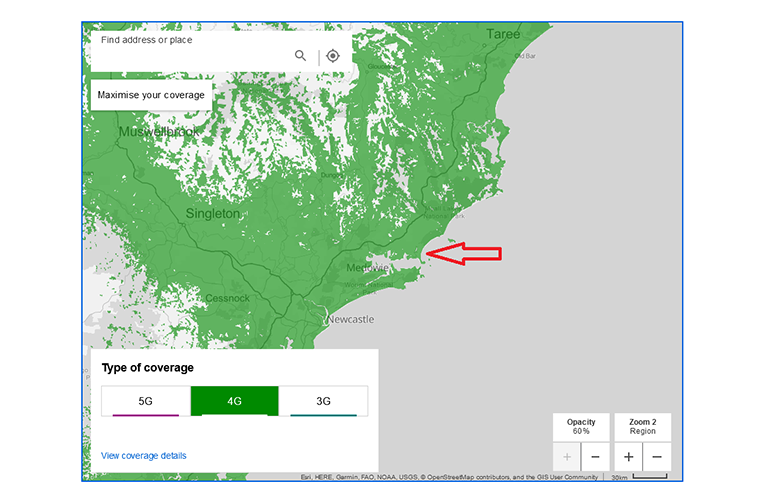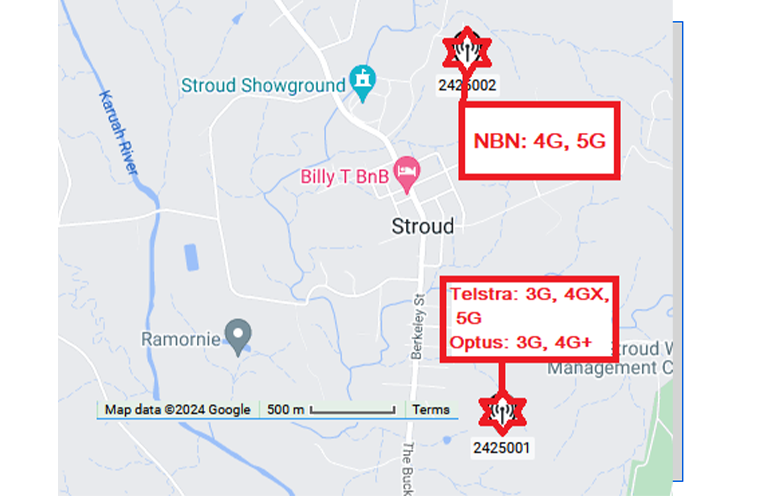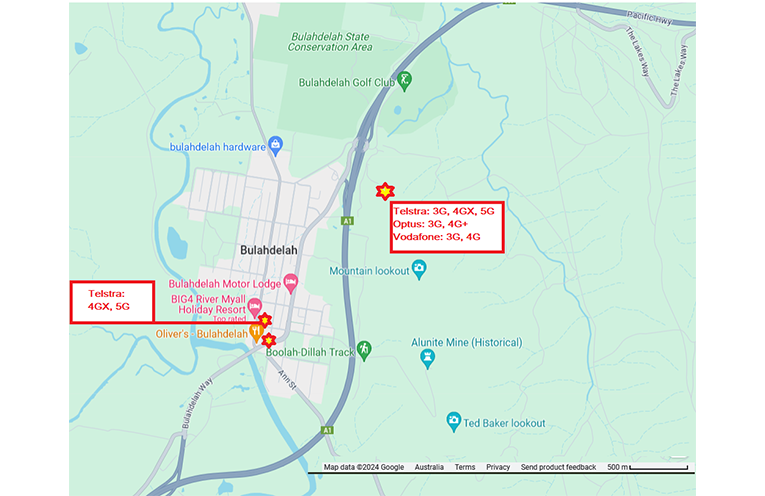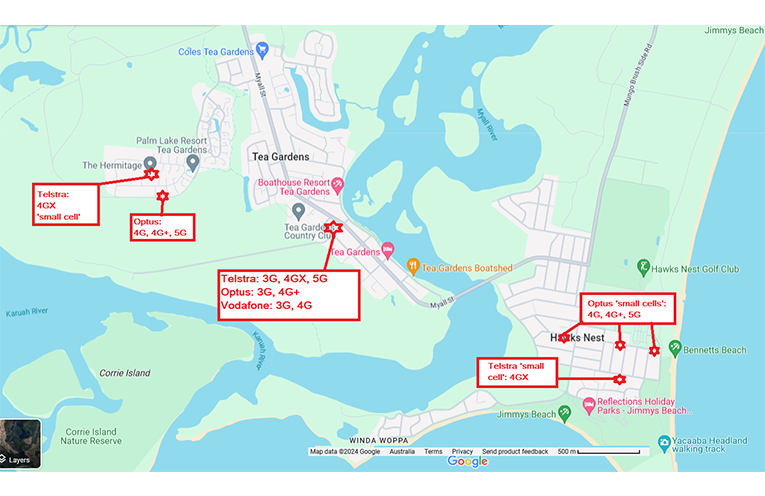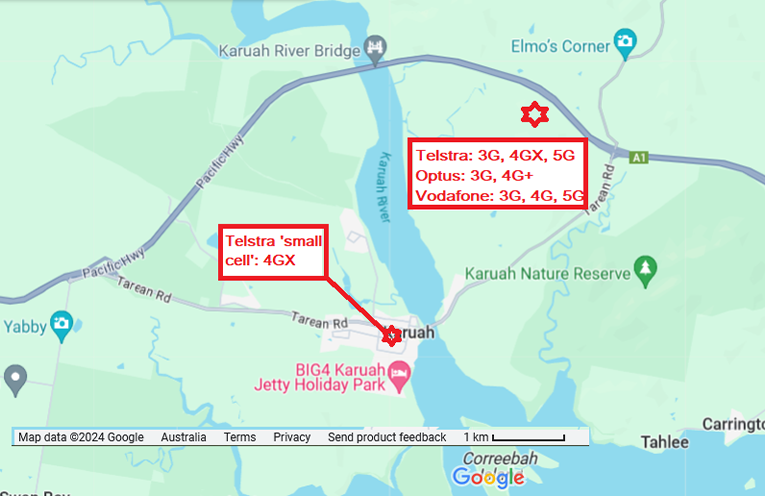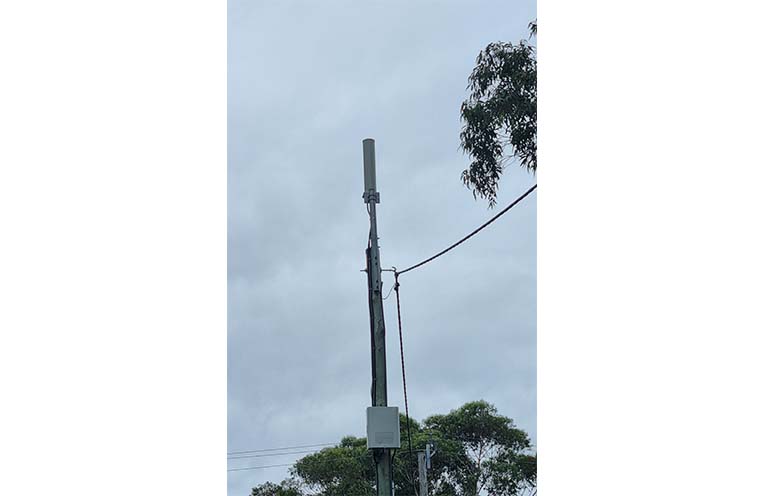
TELECOMMUNICATIONS have been an ongoing nightmare for Myall Coast residents, so News Of The Area has conducted a local review of what the current mobile phone infrastructure is in the area, in light of the imminent Federal Review.
The official Telstra coverage map corroborates what most telco carriers tell disgruntled customers when they call to complain – almost the entire region is covered and good to go with 4G.
 Advertise with News of The Area today.
Advertise with News of The Area today.It’s worth it for your business.
Message us.
Phone us – (02) 4981 8882.
Email us – media@newsofthearea.com.au
According to the Radio Frequency National Site Archive (RFNSA), Tea Gardens, Bulahdelah, Karuah and Stroud all have at least one major tower that hosts all three of the mobile phone service carriers – Telstra, Optus and Vodafone – although the latter three are really highway coverage towers.
Hawks Nest is home to four ‘small cell’ units, three for Optus and one for Telstra, installed during 2021, ostensibly to piggyback off the main tower in Tea Gardens.
‘Small cells’, according to the Australian Communications and Media Authority (ACMA) are a “high-speed technology that telcos have started to introduce”.
“Small cells give coverage of 50-200 metres, while ‘macro cells’ (normal towers) provide coverage of up to several kilometres.”
Pindimar, Bundabah and North Arm Cove do not rate any kind of mobile infrastructure, and most residents rely on line-of-sight to the Gan Gan tower at Nelson Bay, or whatever they can get from the high point near the Totem.
Federal Member for Lyne Dr David Gillespie has formally invited the new Committee of the Regional Telecommunications Review to the area, saying, “I hear how frustrated local businesses and residents are with their mobile and data services not being up to scratch.”
Large gum tree areas may also be having adverse effects on mobile phone signals.
Alan Young, a Research Leader with CSIRO Telecommunications and Industrial Physics, previously said in an ABC report, “Trees of any sort have been known to block radio signals – they both absorb the signal and scatter it in many directions.”
There is no shortage of eucalypts on the Myall Coast, making this one of many factors to be taken into account when a phone user is seeking a signal from the perfunctory infrastructure currently available.
Residents can check their own area directly at the RRNSA website at https://www.rfnsa.com.au/home.
By Thomas O’KEEFE

